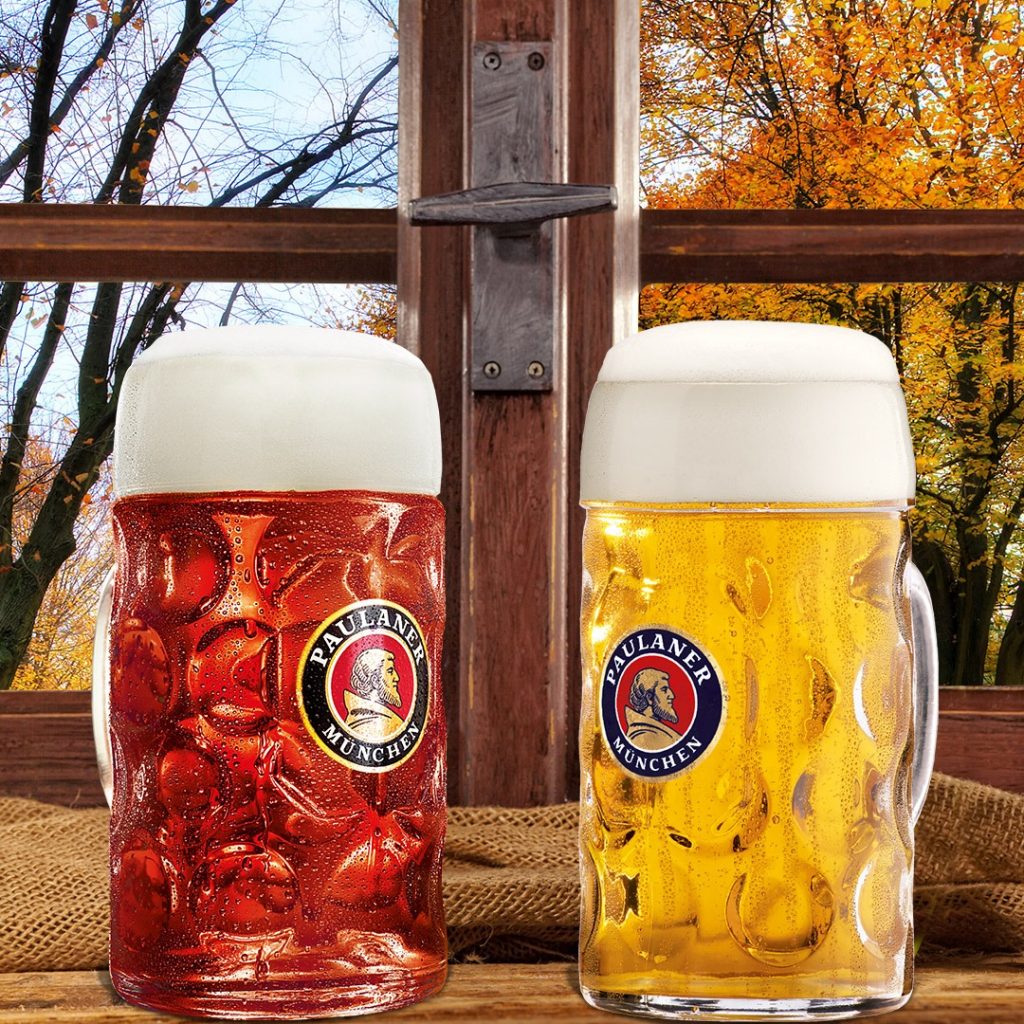
St. Louis Beer Blog: History of Oktoberfest Beers
Oktoberfest is officially over for us at UCBC as well for those in Munich*. However, our Oktoberfest Lager, Oachkatzlschwoaf (aka O-Katz) continues to flow, so let’s chat about this beer and the history of the style.
O-Katz is a Märzen style, which nowadays is labelled as a cold-fermented** beer with a deep amber color, slightly stronger than the standard lager beer with a deep malt character and notes of bread and bread crust. This rich, yet smooth, easy-drinking beer is associated with fall and Oktoberfest in the United States, as this style was the most served beer at Oktoberfest in Germany from the late 1800s through the 1950s***.
The typical Oktoberfest beer today is a paler, drier beer than the Märzen style. The story goes like this: in the mid-1970s, the Paulaner brewery wanted to brew a beer that was a little easier-drinking (“more poundable” as the story goes) than the full-bodied brew they normally offer. They started a trend that others began to follow. While many believe every brewery converted to this kind of beer around 1990 (like this video), these videos from 1972 and 1987 show some beers that already look fairly pale!
The history of Märzen is a bit more complex. “März” is German for the month of March as this was typically the time this beer was brewed. From 1553 to 1850, brewing in Bavaria was limited by law to September 28 to April 23. This was likely due to the recognition that beer brewed during the warmer months tasted a bit off, meaning it likely was infected by wild yeast and/or bacteria which are more active during the warmer months*****. While there was no brewing from late April to late September, the people (from the ruling Wittelsbach Family all the way to the poorest in society) still wanted and needed their beer. To keep Bavarians well supplied during the warm months, breweries massively ramped up production in March and stored the beer in cellars until late September when brewing resumed.
This March beer (Märzen) was brewed stronger than the typical beer brewed for winter. This might seem odd to us today with winter seasonal beers most often stronger than summer seasonals, however when you consider the necessary shelf life for these beer drinkers hundreds of years ago, it makes sense. Beers brewed for winter drinking (Winterbier) were consumed quickly, but the beers brewed for the summer (Sommerbier) needed to keep for many months. As higher alcohol extends a beer’s shelf life, the summer beer needed to be stronger to last.
This brings us back to O-Katz. This style was originally meant to stay fresh for months, and true to the style, O-Katz drinks rather well for quite some time after Oktoberfest is over. In fact, as part of our Quality Assurance program, we conduct weekly beer sampling panels, and these help us confirm the shelf-life of our beers. True to it’s style, our beer research shows that O-Katz maintains its flavor and aroma for months (and months) after it’s brewed. So, if you want to continue that Oktoberfest feeling or just want a malty lager that’s different than Zwickel or Dorfbier, go for an O-Katz!
* By the way, Oktoberfest’s start date was moved to mid to late September in 1872 because the weather is nicer
** Cold-fermented = lager yeast
*** Beer author Andreas Krennmair has documented the selection of beer at Oktoberfest from 1882 to 1936 very well as well as the typical Märzen at Oktoberfest in the 1950s. You can even see the color of the beer in this video from 1956.
**** As author Ron Pattinson has found, beer production in Munich shifted towards paler beer starting this the 1950s, and it is somewhat likely this trend also applied to Oktoberfest beers.****
***** Some believe summer brewing bans were due to increased fire hazard during warmer, drier months. Several places throughout England and Europe also did not brew during the summer
-Nate Brinson
Brewery Locations

The Grove
Bierhall
Our Grove location has plenty of space for your next large gathering, featuring delicious pizza and more from our friends at Fordo's Killer Pizza!

The Midtown
Biergarten
Serving your favorite burgers, fries and salads at our Midtown Biergarten! Try our new plant-based burger!

Hallertauer
Brauerei
Urban Chestnut's third brewery is located in the Hallertau region of southern Germany, near our Brewmaster's home town.


